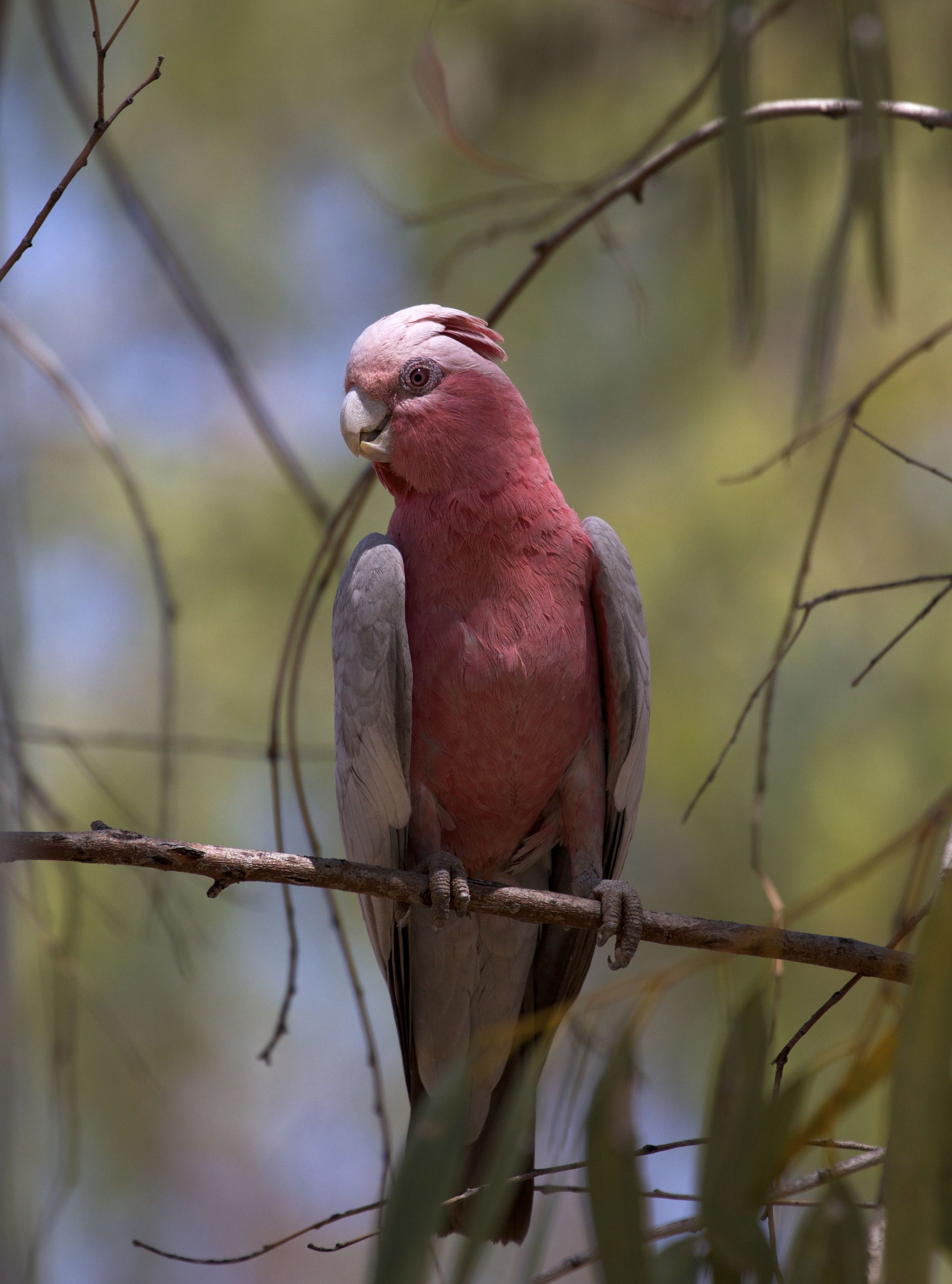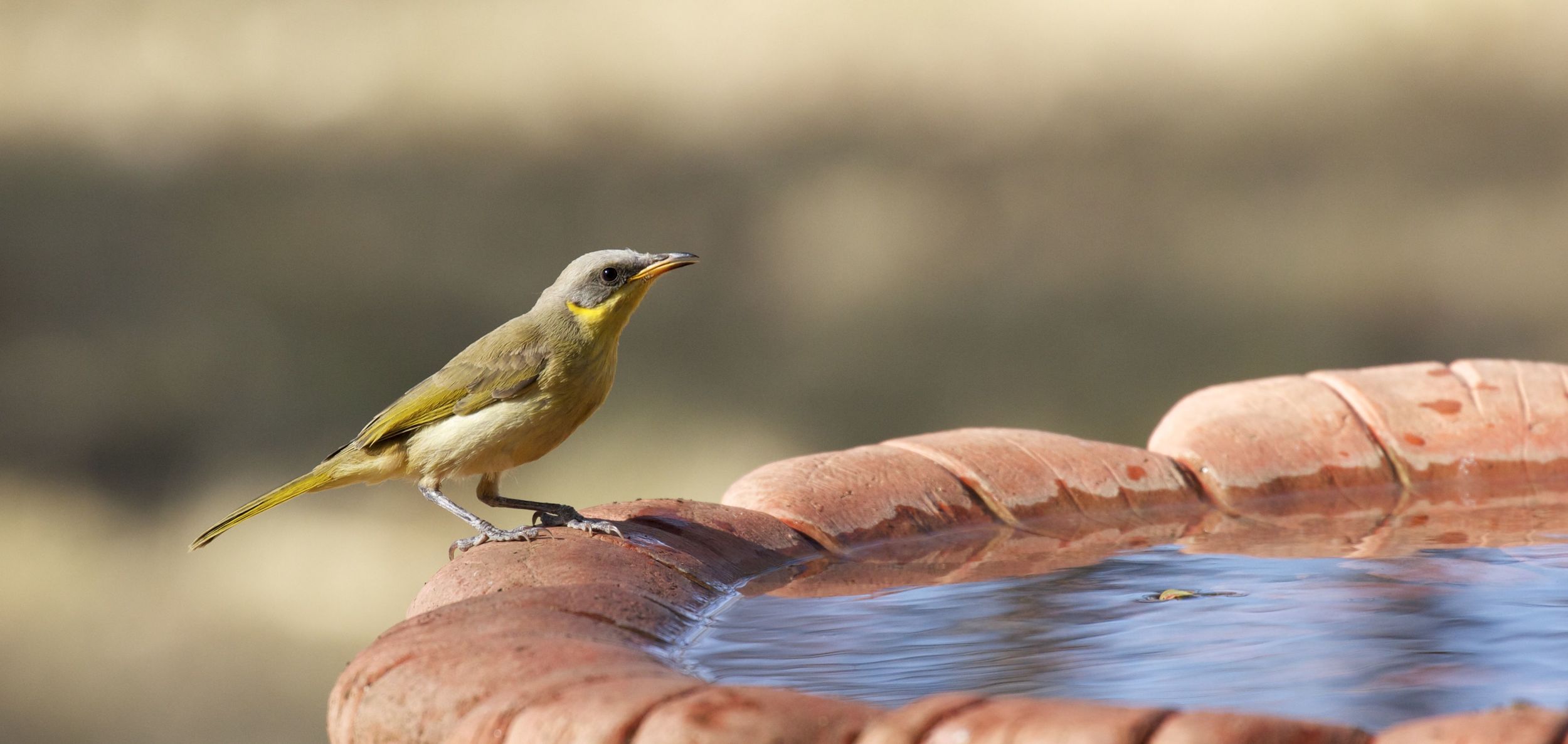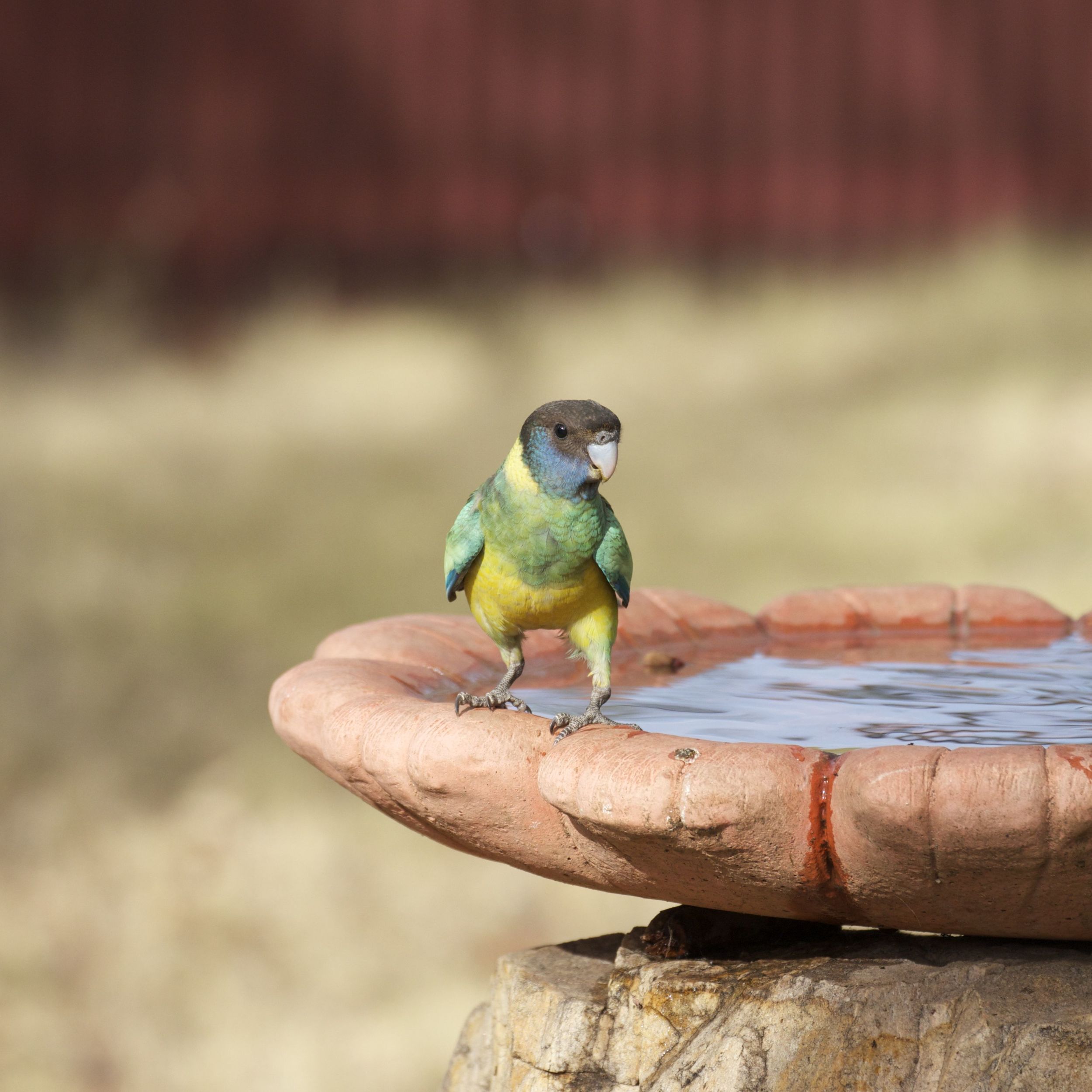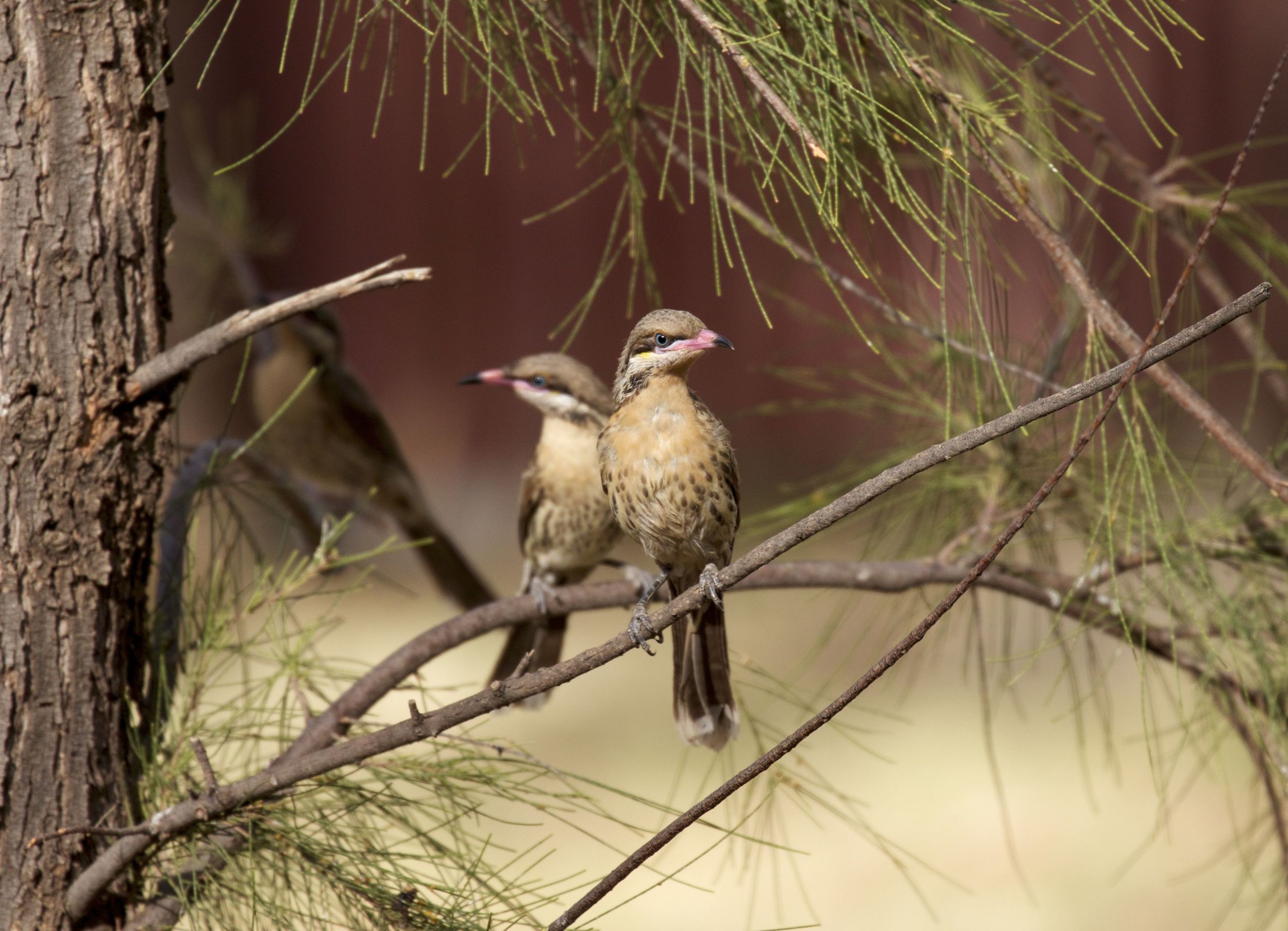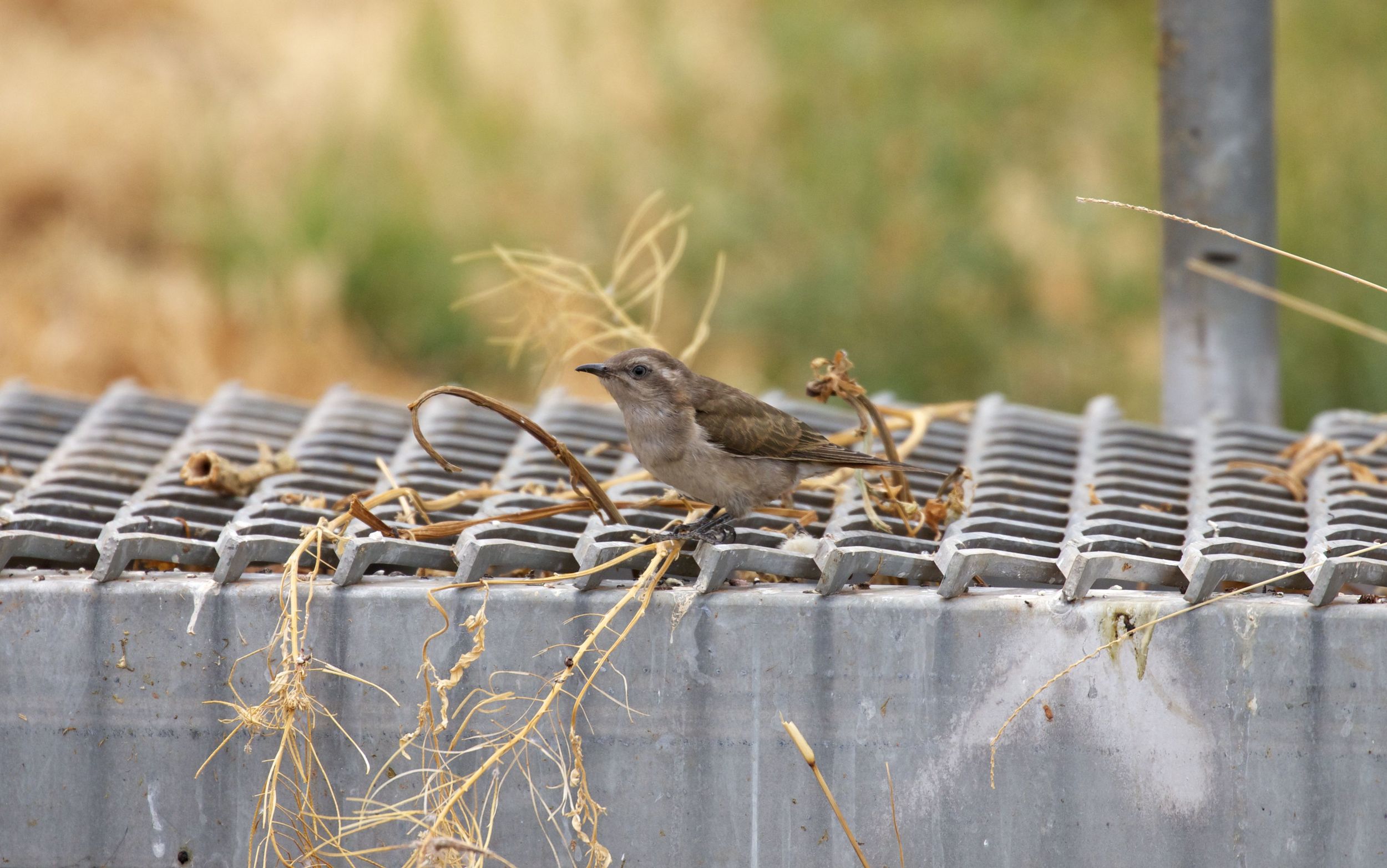For the birds
/Port Lincoln Parrot (adult), Alice Springs, NT
Having only just returned from gallivanting around the world, I stuck fairly close to home during October, catching up on all the things I should have done while I was away. But, as the heat of summer began its inevitable ascent, our own backyard became quite the hive of activity. Birds of a great variety of species have bred and fledged their little ones.
The sudden population increase is particularly evident at our birdbath. Not only are there more individuals around, with week-long stretches of back-to-back 35-40° days, surface water is becoming increasingly scarce. The reliable water supply of our birdbath is a massive draw card to all species. Regular visitors include Galahs (Eolophus roseicapilla), White-plumed Honeyeaters (Lichenostomus penicillatus), Spiny-cheeked Honeyeaters (Acanthagenys rufogularis), Crested Pigeons (Ocyphaps lophotes), Port Lincoln Parrots (Barnardius zonarius), Yellow-throated Miners (Manorina flavigula) and Pied Butcherbirds (Cracticus nigrogularis). However, the local flock of Spiny-cheeks has more than tripled in size and they now dominate the birdbath, driving many of the other species off, using their superior number to eject even the much larger parrots at times.
One very pleasant morning, before the heat drove me back to the air conditioning, I sat and watched the antics at the birdbath. Spiny-cheeks filled the nearby tree like brown fruit, flitting down in small groups taking their turn at the water. Particularly brave White-plumed Honeyeaters would slip in occasionally, tolerated only for a second or two before being aggressively dive-bombed by the march larger Spiny-cheeks. A surprise visit from a Grey-Headed Honeyeater (Lichenostomus keartlandi) highlighted a pattern between the adult birds and the juveniles. The bubbas tended to have much lighter beaks than the adults. Their colours were often not as bright as the adults, particularly in the case of the Port Lincoln Parrots, and many of the juveniles still maintained a hint of fluffiness that set them apart from their sleek adult counterparts. The Galahs are trickier to distinguish by sight. But you would have to be deaf not to notice how the juveniles squawk almost continuously at an ear-bleeding pitch and volume.
Across the road, our local Southern Boobook (Ninox novaeseelandiae) has successfully fledged two chicks and is currently teaching them to hunt and fly in the early evenings. Slightly further afield, the remaining freshwater puddles on the outskirts of Alice Springs are a valuable resource for Painted Finches (Emblema pictum), Zebra Finches (Taeniopygia guttata), Budgerigars (Melopsittacus undulatus) and a variety of other small birds raising their fledglings. A Horsfield’s Bronze-cuckoo (Chrysococcyx basalis) also put in an appearance, although who was raising it remained a mystery.
At the Olive Pink Botanical Garden, the Western Bowerbirds (Chlamydera guttata) are hard at work ensuring their bowers are immaculate. These incredible constructions are not a nest, but artwork designed to attract a female. Not only does the architect build these intricate structures, but they also decorate the entrance with various objects. Different species of bowerbirds tend to have a preference for different colours and objects. The Western Bowerbirds have a taste for white and dark green objects, ranging from unripe fruits and bones to plastic cutlery and die-cast military toys.
Rival males are known to sabotage another bower, nicking the good decorations or simply trashing the bower itself. Females cruise the area, checking out the various bowers using them to judge the suitability of a mate. The architect will dance for her, waving particular good decorations around to draw her attention, his neon purple crest flared out on the back of his head in stark contrast to the dappled black and gold of the rest of his body. If he managed to impress the female they will mate, but she does not lay her eggs in the bower. She has a nest somewhere else, hidden from the high traffic zone of the mixed media artwork that is the bower. And if their construction skills weren’t impressive enough, Western Bowerbirds are also incredible mimics. They are capable of copying any birdcall but also often include human noises in their repertoire. They would give the Lyrebird a run for its money!
While it is very exciting to explore overseas, I still enjoy the adventures closer to home. The biodiversity of Australia never ceases to amaze.

